“One way to look at gardens is that there are two types: a picture and a story,” says Jim Scott, lawyer by trade and self-made master gardener. “A picture garden is like anybody’s front yard — it is to be seen and looked at from one general position. And I’ve been to some very famous gardens, where I’ve seen that particular picture a hundred times in magazines. And if you stand right in front of that one spot and look at it, it is a knockout. Um, but there it is. You’ve got about three views; it takes about 15 minutes, and you say, ‘Well, I got it.’
“A story garden is more like a story, where you start off with some sort of anticipation. Anybody who writes a story is doing the same kind of thing — you start off with an anticipation, two or three lines that get you hooked, and then you build tension, and then you have a release,” says Jim.
“And in my garden, you start off on a path, and you’ll wonder where it goes. Most of those paths end up being either high or very tight or dark or going up and down steps, where you get a certain amount of tension, because you don’t know where it’s going to go, and then you come to a large open space, where you sort of stop, sit down and say, ‘OK, I’ve arrived.’ Then you see another path that goes somewhere, but you can’t tell where, and so you have a new anticipation.”

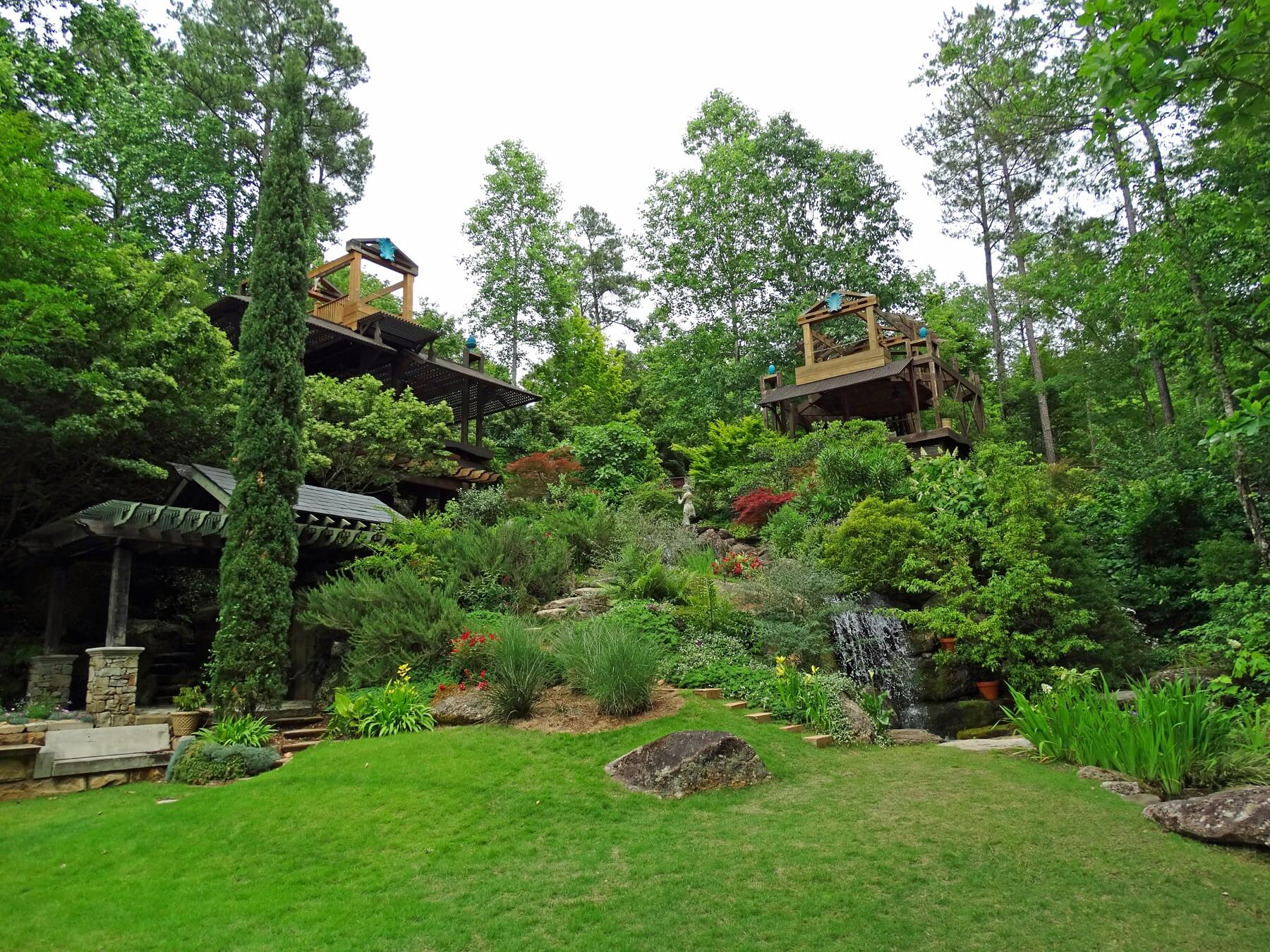





Jim Scott’s sprawling garden at Lake Martin in Alabama is an immersive, 360-degree experience that swallows you in its verdant grandeur. It’s like a living choose-your-own-adventure book, a veritable forest wonderland where one can truly get lost in the natural beauty of endless wild and winding paths, al fresco dining areas, castle-like structures, caves, swimming ponds, treetop walkways and more, all peppered with thought-provoking quotes, playfully placed statues, imaginative play areas — for adults and children — and, of course, a wine cellar.
“It’s really more of an experience than a view,” says Jim, who discovered his magical green thumb while designing Grace Gardens at Grace Episcopal Church in Mt. Meigs, Alabama. “Generally speaking, with my garden, you can walk for a couple of hours and still be running into stuff you haven’t seen before.”



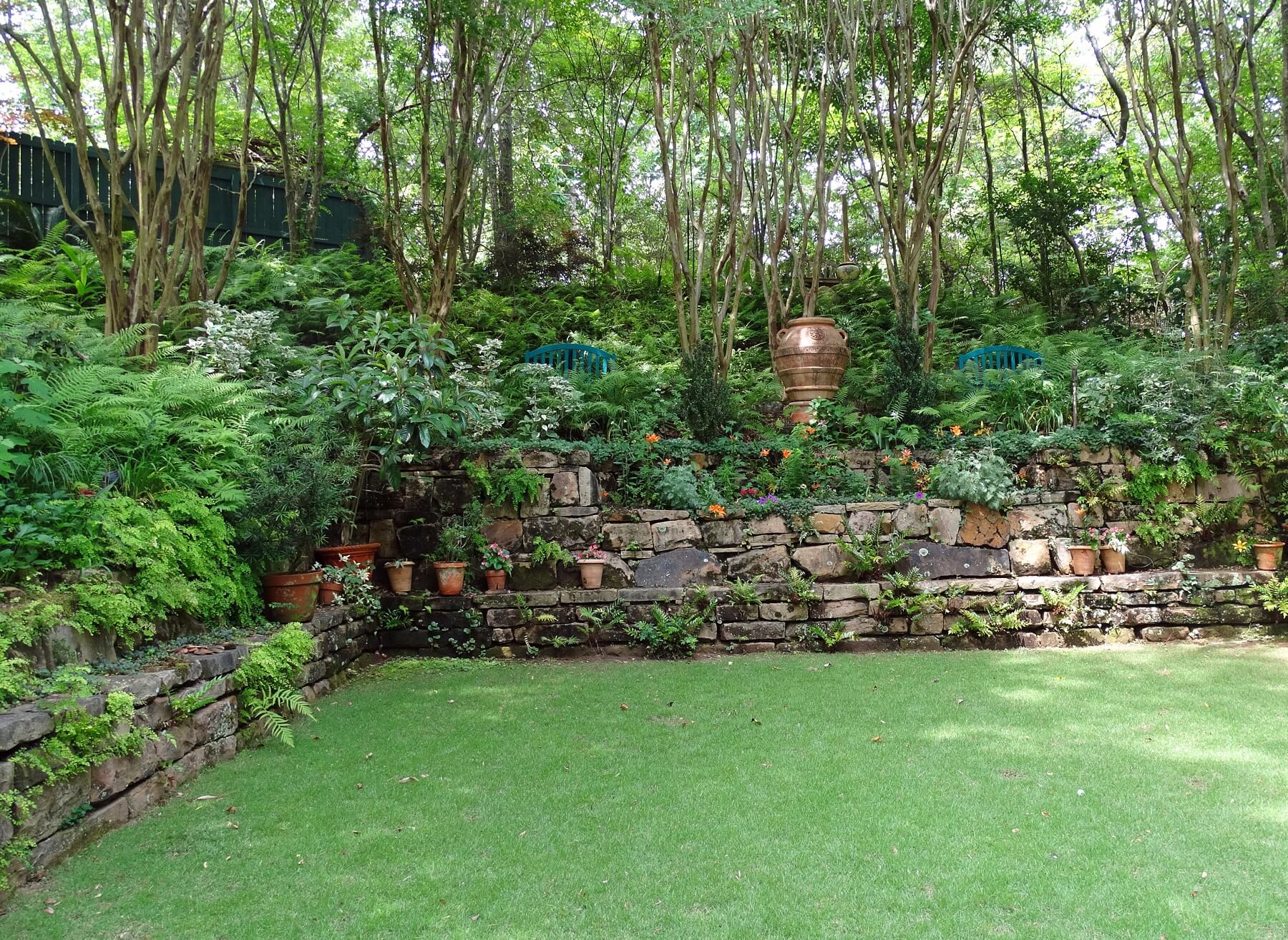
RELATED: This May Be One of the Most Beautiful Yards You’ll Ever See!


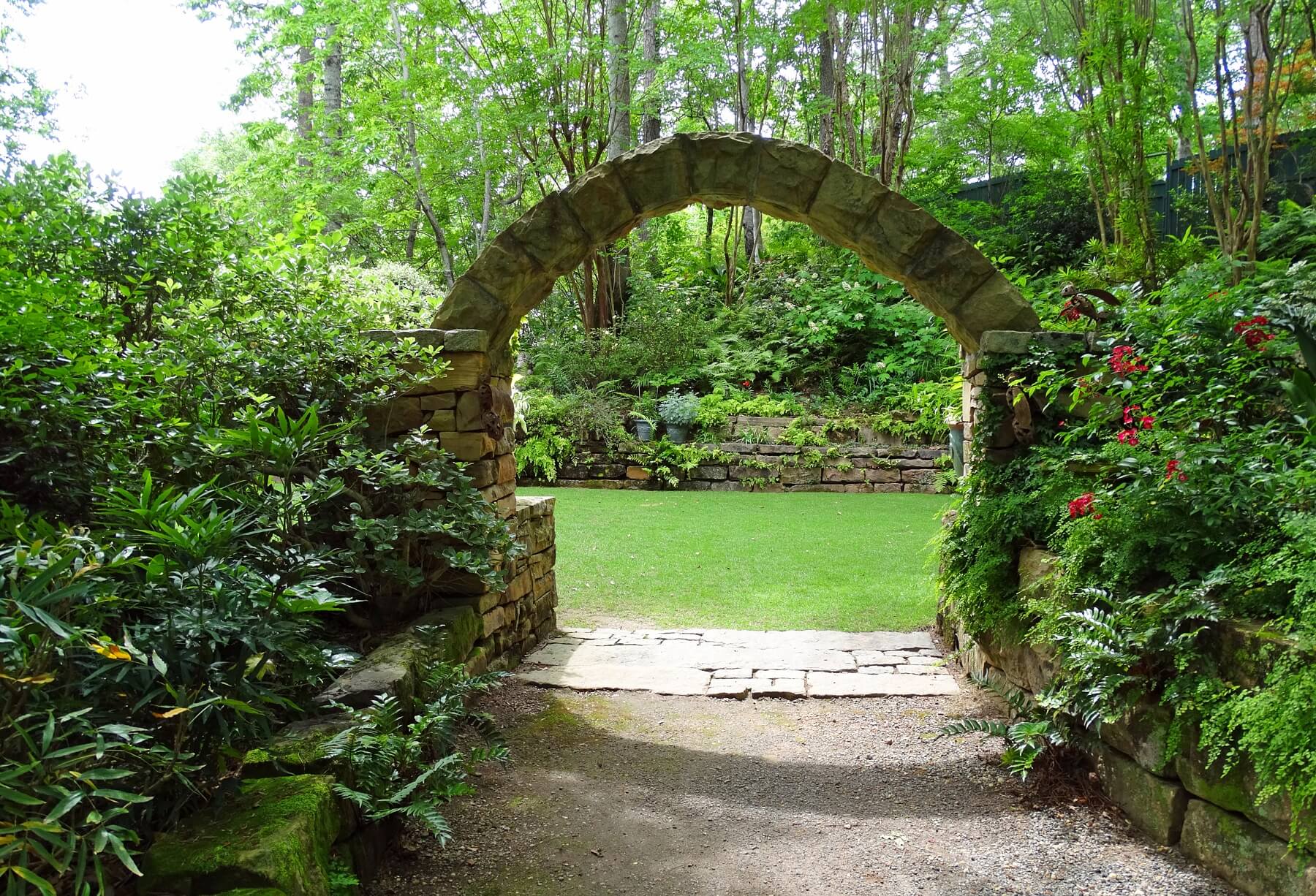
One cannot witness this garden without wondering about its creator. What drove this tax lawyer to create such a wondrous and enchanting garden? The answers are almost as mysterious, fascinating and amusing as the man himself.
Jim’s voice is characteristically Southern: gentle, melodic, honest and funny. When pressed about his creative process, he replies, “One thing led to another. I’d get to a point and say, ‘What the hell am I going to do here?’ And I’d say, ‘Well, you know, this would be cool or this would be kind of weird.’ And you kind of piddle around with an idea, draw it up and play with it, just to see what it looks like. And it’s fun buying the plants and seeing if they will come up,” says Jim. “I’ve killed about a million unhappy Yankee plants, and everybody says you can’t grow them in the South, and, by God, I prove that they are absolutely right.”
“I suppose I’ve got the designs for a thousand gardens,” says Jim, whose frequent travels obviously include notable gardens, such as Chanticleer, one of his favorites. But Jim draws inspiration from no particular place, and that’s evident in the garden’s singular design. It is both rambling and eloquent, like a mind in meditation. “It’s got a lot of very formal spaces in that the croquet court is exactly twice as long as it is wide; the palladium space and a number of other spaces are geometrically perfect after you get through really weird, wandering-around, haphazard bits,” says Jim. “I think it’s nice to have that juxtaposition of wildness and tameness. It’s sort of like a Greek tragedy, where you have really wild ideas in very formal settings. And the garden juxtaposes woodland with fairly formal spaces.”



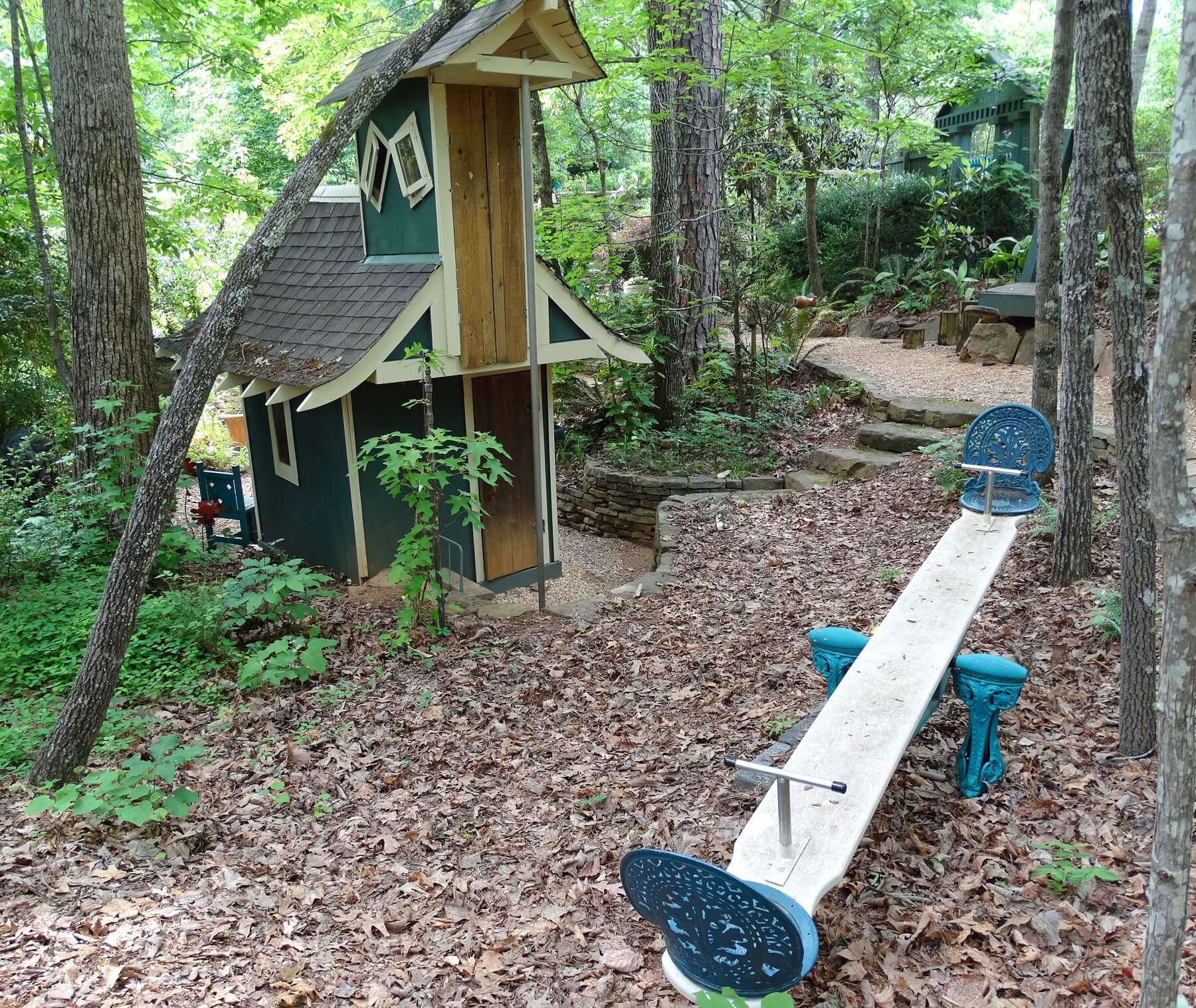
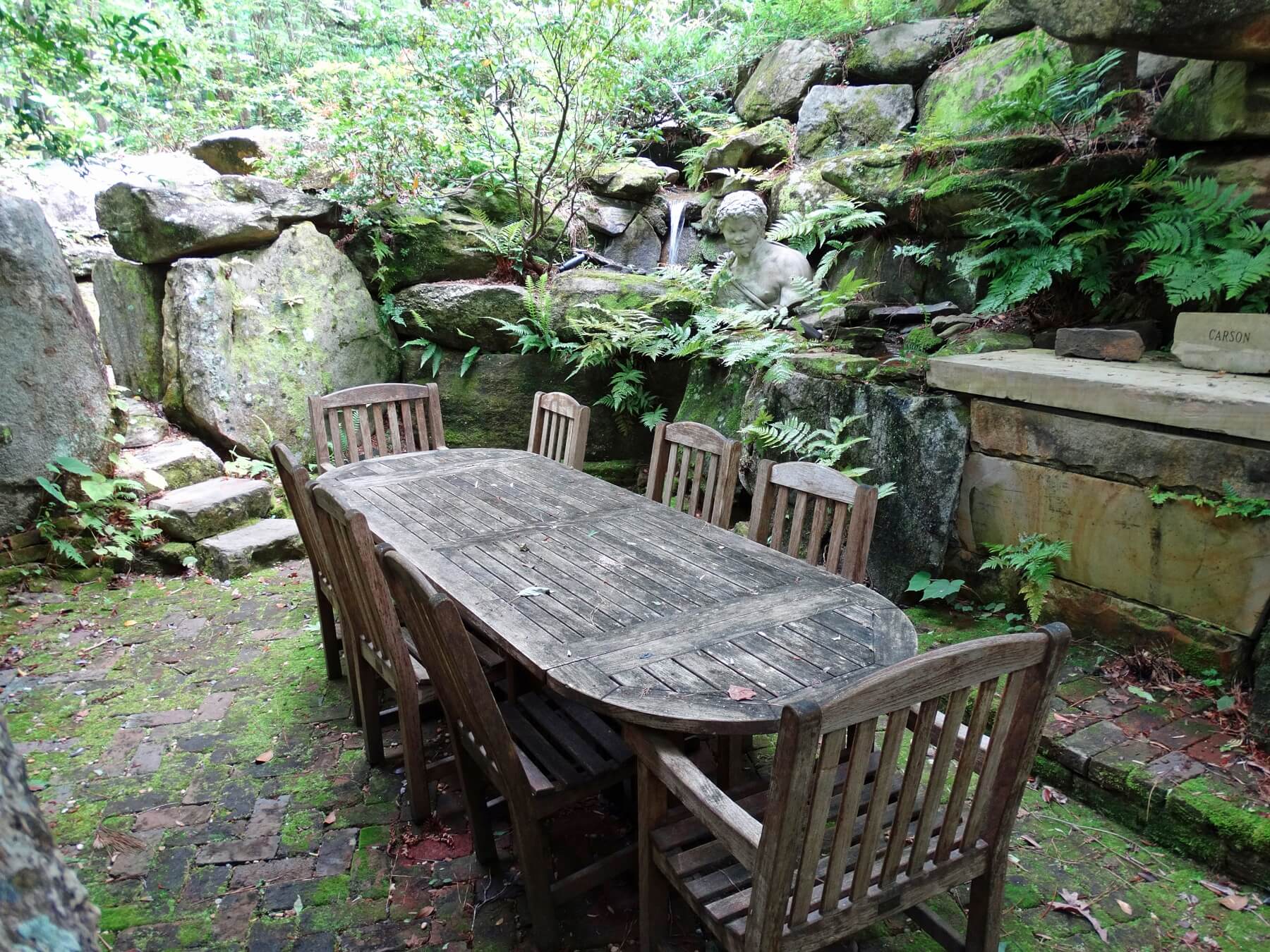


RELATED: A Dream Kitchen with Kitchen Garden

This literary influence has deep roots in Jim’s design approach. Quotes from famous works are the cosmetic touches on this earthly paradise, but grammatical structure comprises its bones. “The chairs and benches are like the ending of a paragraph or a sentence in that you come to a seat and you may not sit there, but you slow down and think about how it’d be nice to sit there,” says Jim. “There are lots of benches and tables and things to do. Nobody ever does them much, but everybody mentally does them. It’s kind of like if you go to Europe and you climb around the castles and go up in the towers. You really don’t want to have people shooting arrows at you or killing you, but you sort of mentally go through that. And I think each time you put a table out, people mentally have dinner there, and I think they kind of enjoy it.”
Jim uses literature in his garden oasis to poke at the line between poetry and reality. A guest might meander along a mossy path and come upon a stone bench inscribed with the passage from Shakespeare’s A Midsummer Night’s Dream, wherein Oberon tells Puck the ingredients for a love potion, and those very ingredients are planted about the bench. Another guest might encounter the word “reality” inscribed upside-down on the door that goes into the kiddie land. “If you look at it through your legs, it reads correctly,” says Jim, who also has a stone bench with reality inscribed in reverse and a mirror cleverly positioned nearby. “If you come to it one way, people don’t even realize it’s a mirror. So, I was sort of concluding that reality can be the exact opposite of what you think it is, but anyways, that’s neither here nor there.”
!["I planted everything that is called for in that particular [Shakespeare] quote, and I guess I could say it didn’t work," says Jim. "But I liked the idea that there was a quote from A Midsummer Night’s Dream, which is a nice sort of thing that takes place in a garden, and that I actually planted all the plants in that quote." "I planted everything that is called for in that particular [Shakespeare] quote, and I guess I could say it didn’t work," says Jim. "But I liked the idea that there was a quote from A Midsummer Night’s Dream, which is a nice sort of thing that takes place in a garden, and that I actually planted all the plants in that quote."](https://styleblueprint.com/wp-content/uploads/2017/06/SB-SE-Jim-Scott-Garden-63.jpg)

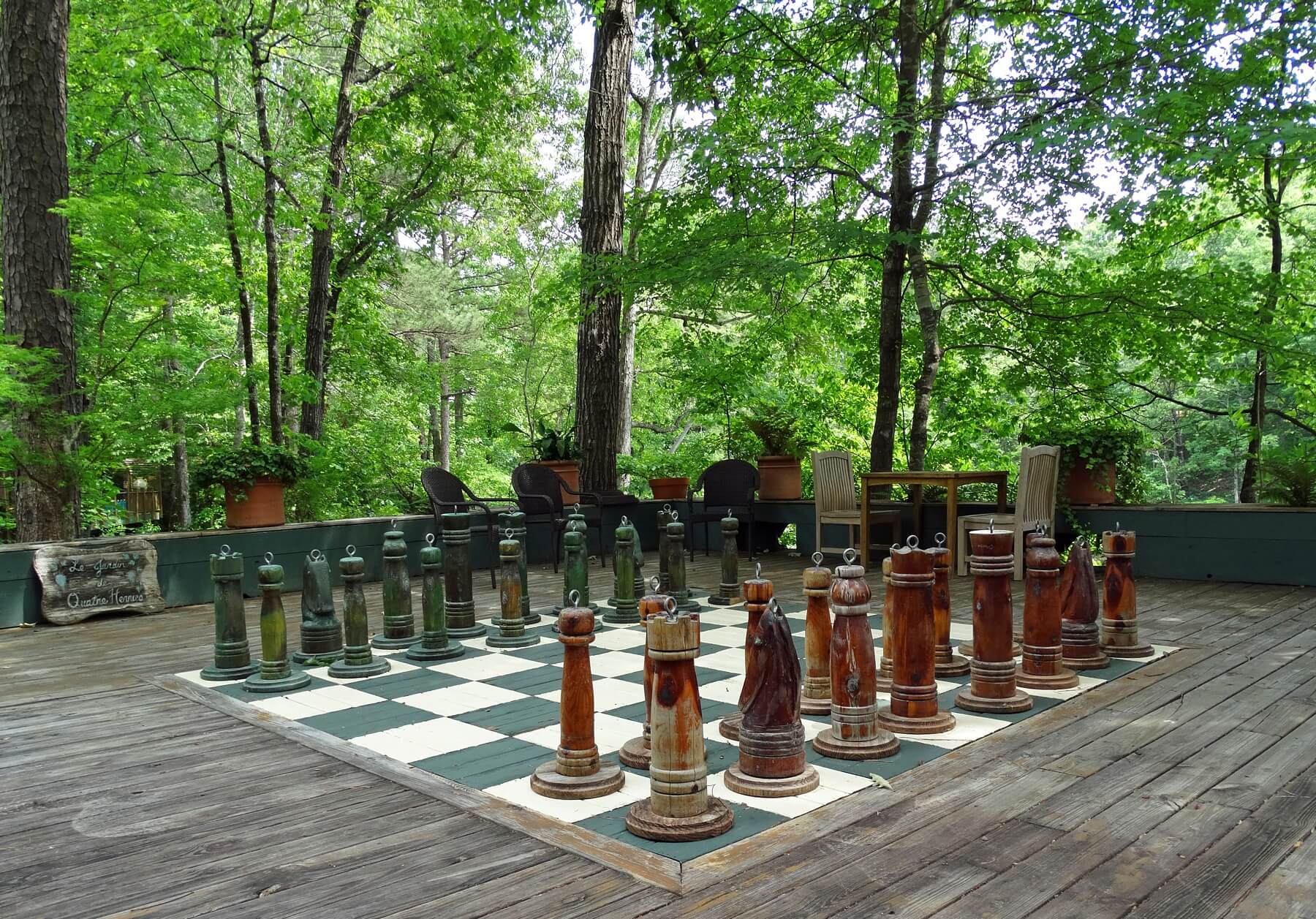
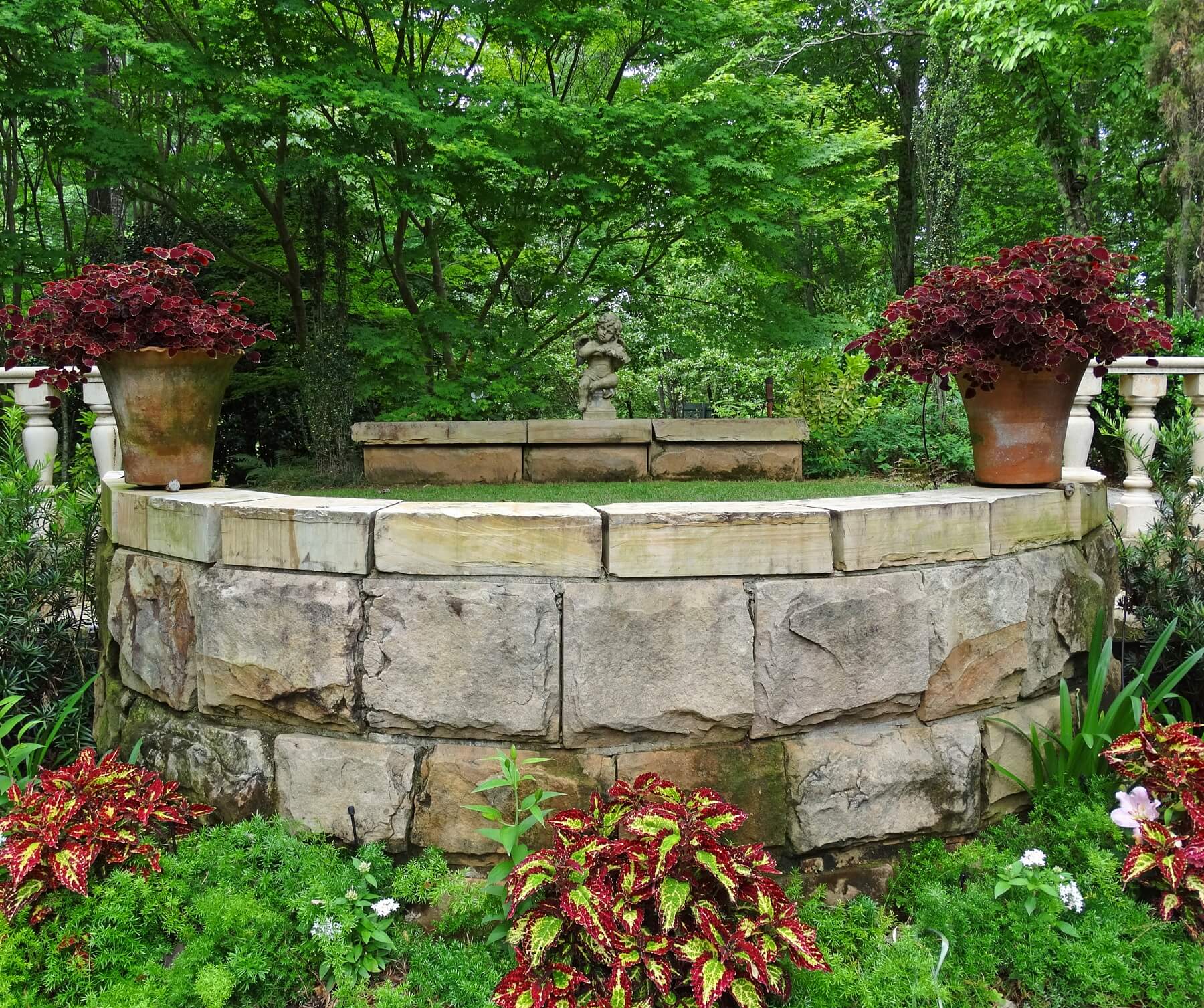






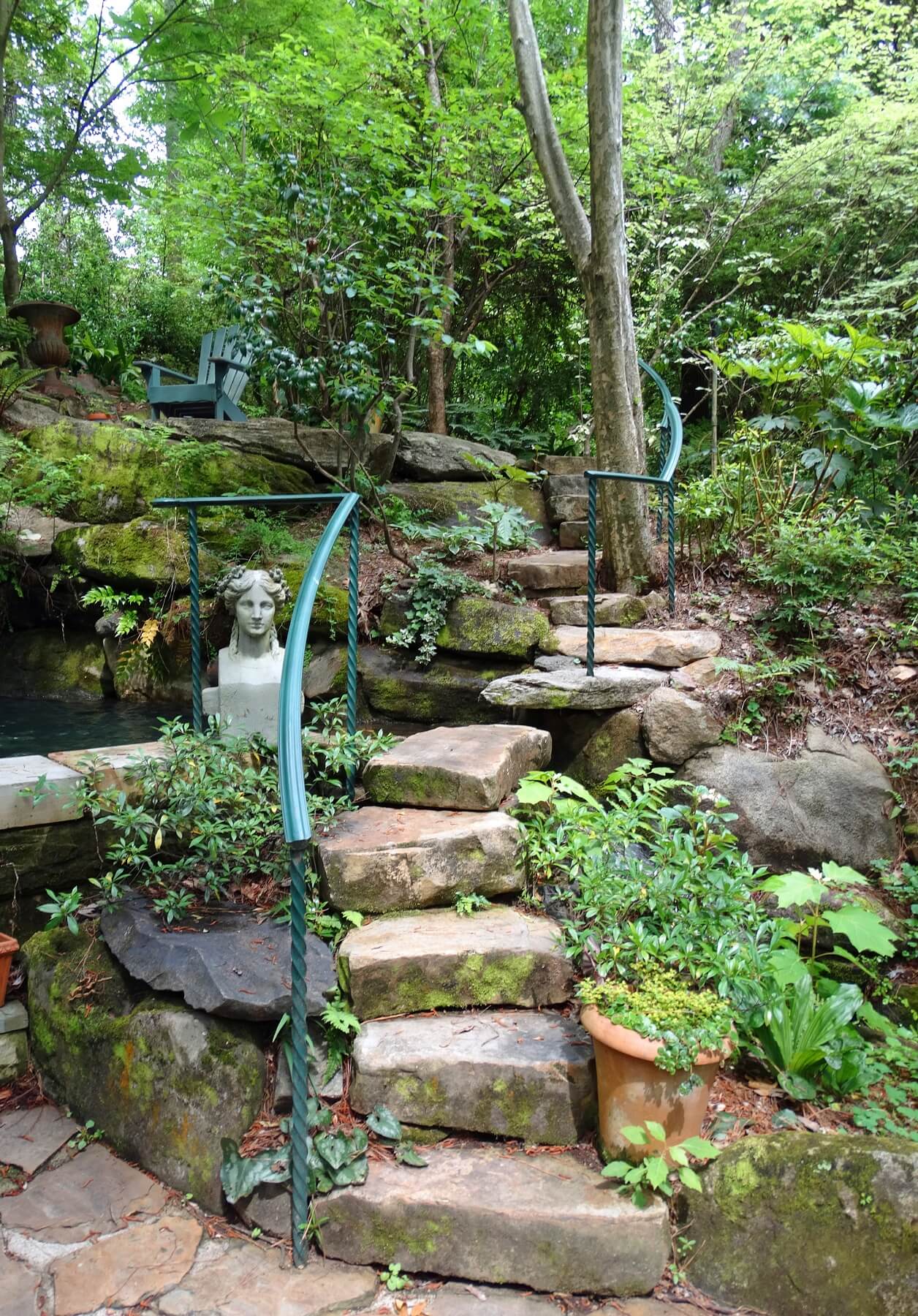

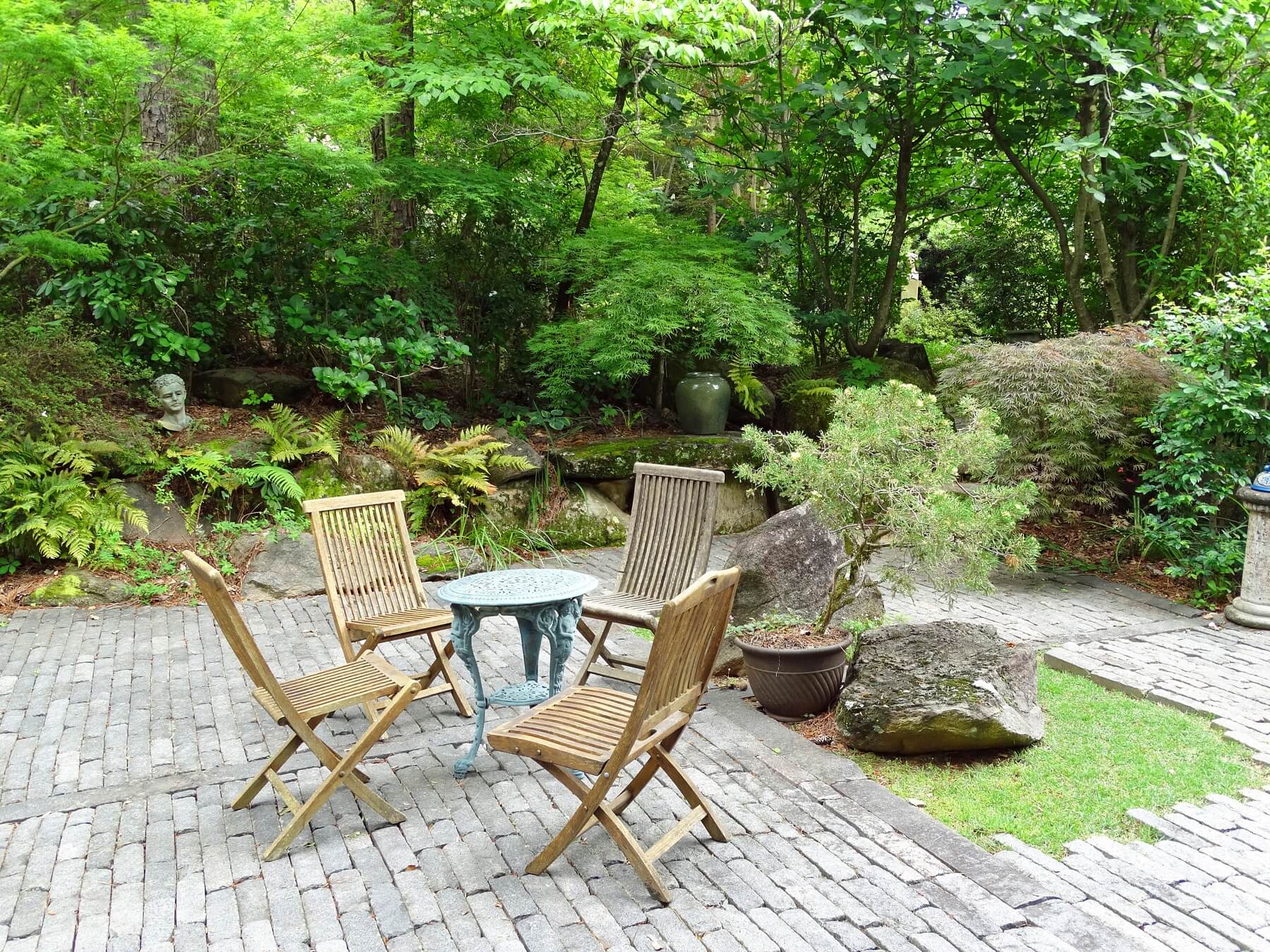
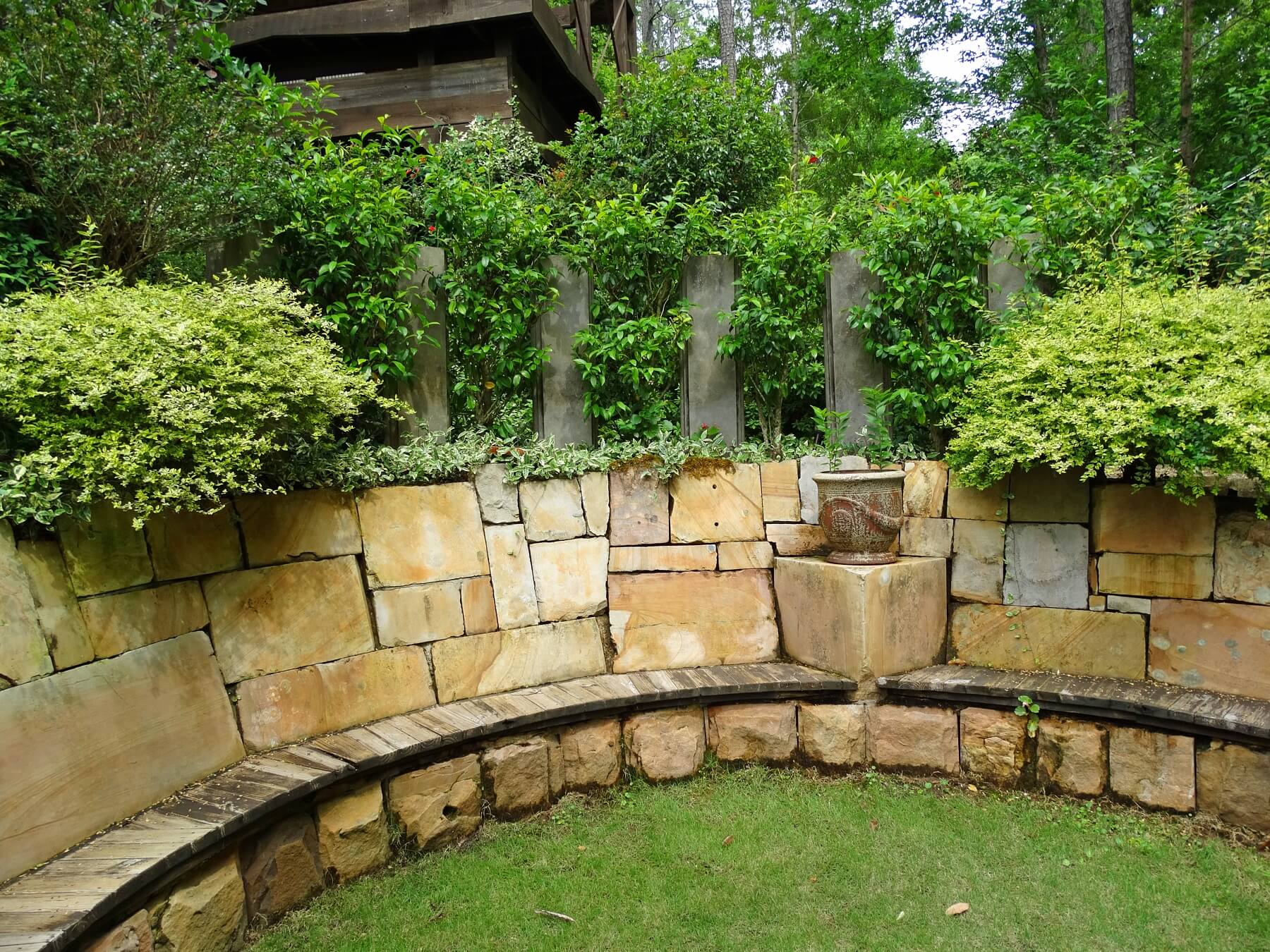
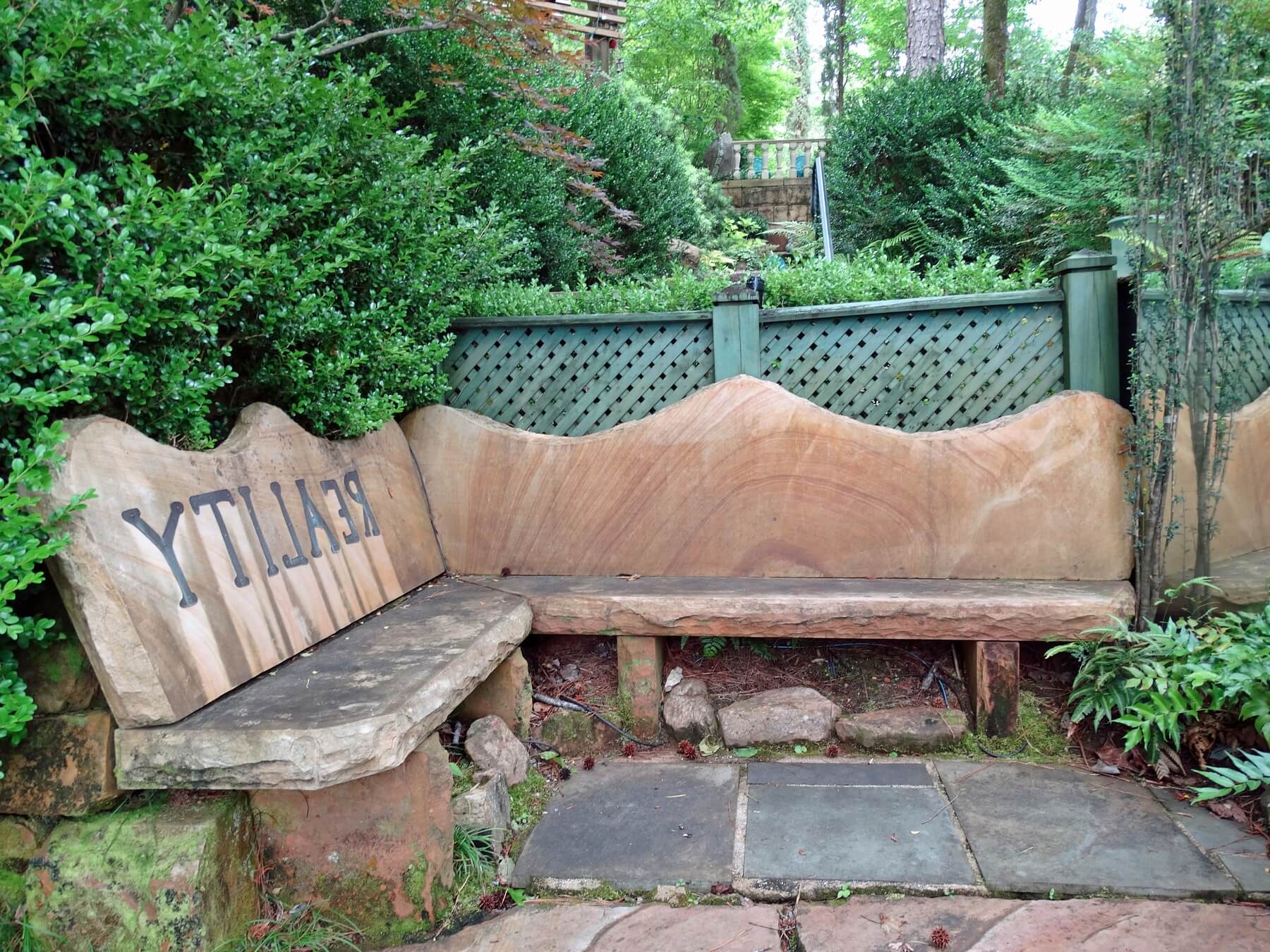


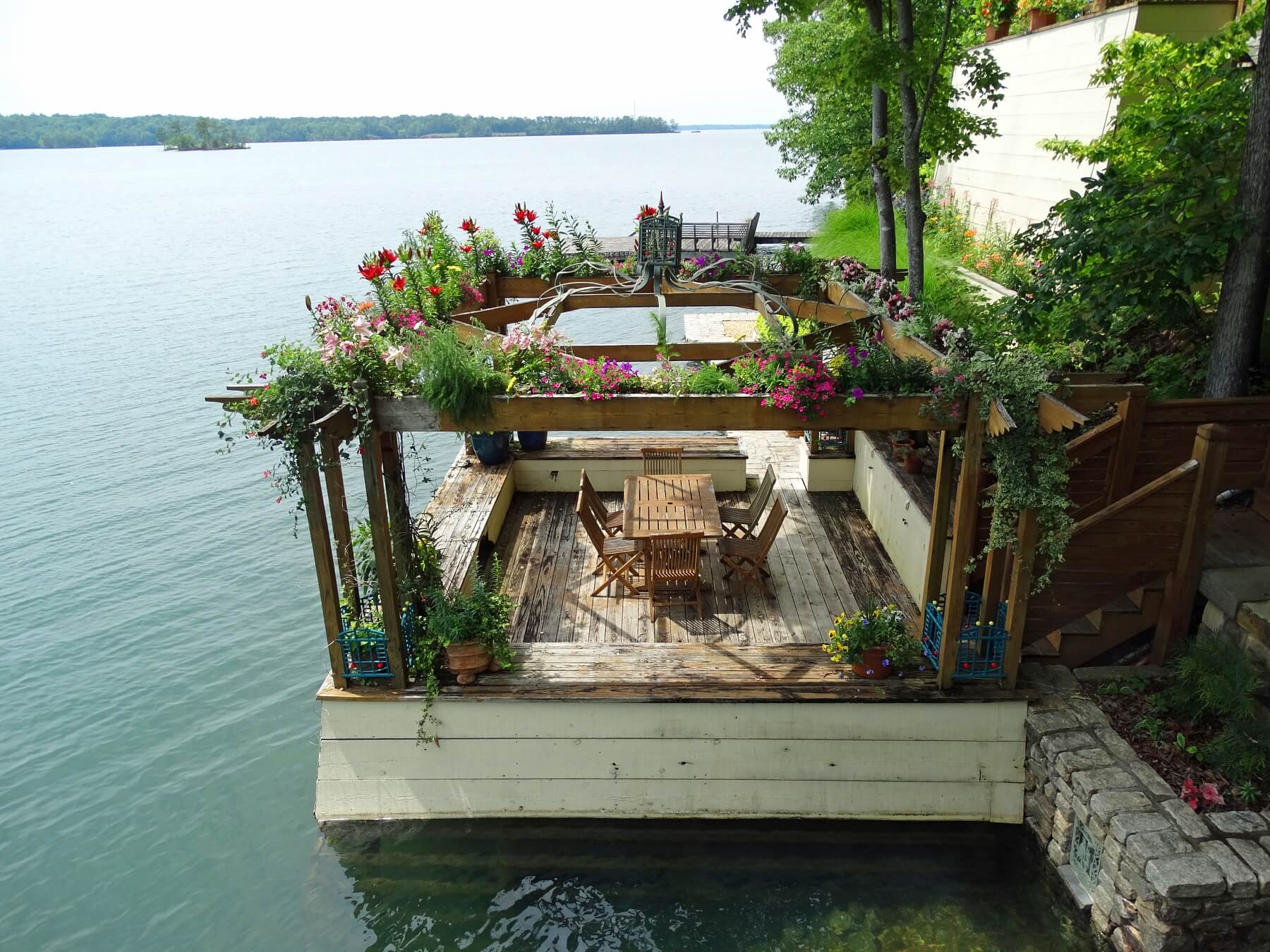


When pressed about the origins of his literary and philosophical musings, Jim presses back. “I am the most ordinary mortal that you’d ever want to cross paths with, and there’s nothing about me that would interest anybody other than my own mother,” he insists. “I am that guy that you walk by a thousand of every day and don’t even know they are there.”
However, once lost in this garden of thought-provoking splendor, one can only beg to differ with the author of this story garden.
If you’d like to see the garden up close, it’s open Mondays, Tuesdays and Wednesdays in late March through May for garden clubs or master gardening groups to tour, free of charge. Groups must be 20 people or more. To schedule a tour, contact Jeannie Curtis at (334) 740-2091.
Thank you to Heydon Hatcher of H. Hatcher Photography for the stunning images of this glorious garden!
And, of course, a special thanks to Jim Scott for sharing his fabulous garden and personality with us!
**********
Want to see more amazing local homes? Check out our Homes section and be inspired!



















